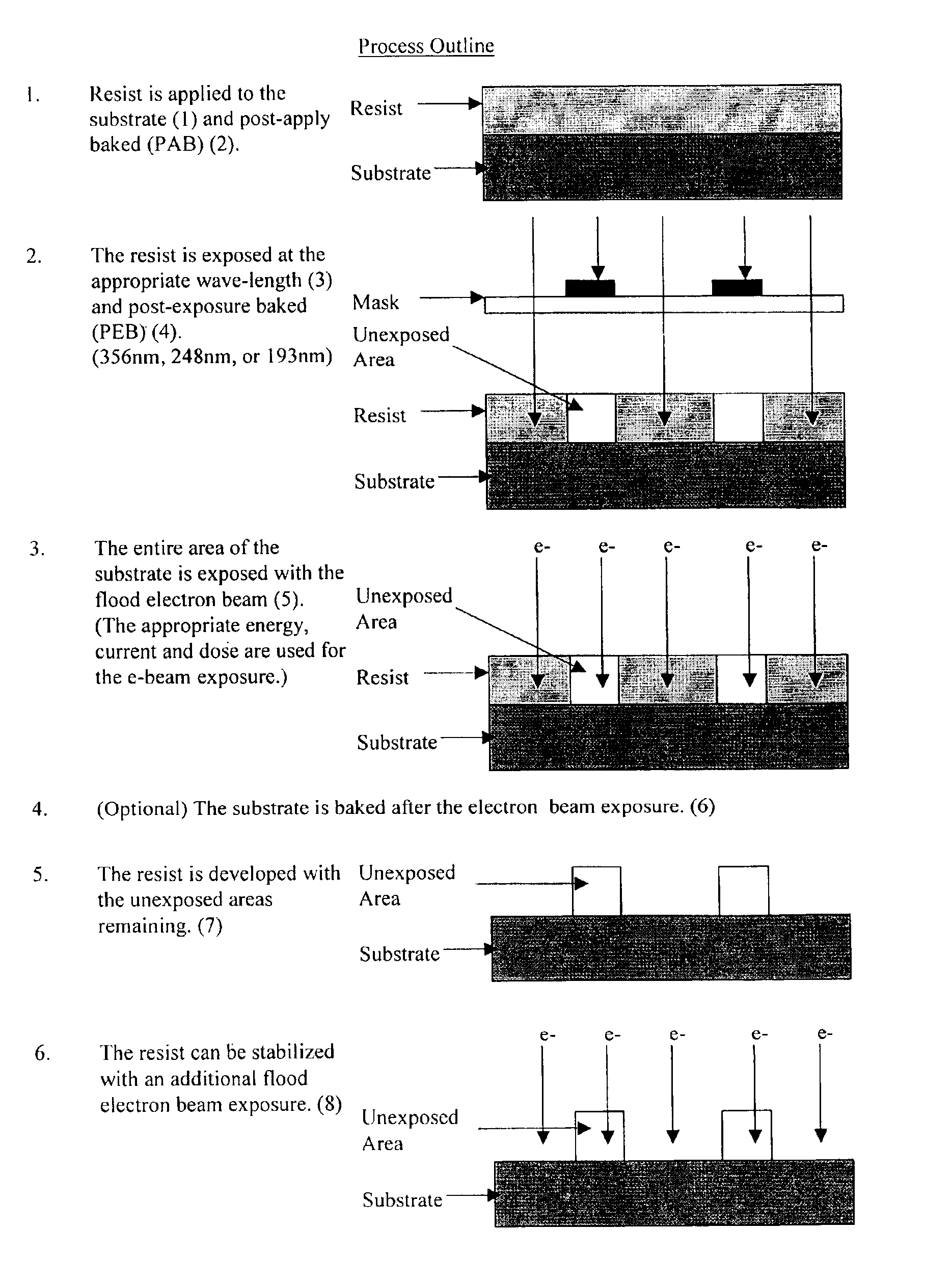Method for modifying resist images by electron beam exposure
- Summary
- Abstract
- Description
- Claims
- Application Information
AI Technical Summary
Problems solved by technology
Method used
Image
Examples
example 1
[0068]A set of ten 100 mm Silicon wafers were prepared by spin coating and baking a chemically amplified resist according to the manufacturer's recommended process. The resist for this example is PAR-101A4 from Sumitomo Chemical of Osaka, Japan. The resist was spin coated on a bench top spin-coat system from Laurell Technologies. The resist was post apply baked (PAB) at 130° C. for 60 seconds per the manufacturer's recommended processing conditions. This resulted in a resist film thickness of approximately 4000 Å. This set of ten wafers was then split into two groups of five wafers each.
[0069]The resist was then optically exposed using a Pen-Ray lamp with emission bands at 2540 Å and 1893 Å across one-half of the wafer. The exposure time was 10 seconds for all wafers. A separate set of tests determined that 10 seconds was sufficient to expose the resist and allow for complete development of the material. No mask was used to create patterns for the following tests. The resist was the...
PUM
 Login to View More
Login to View More Abstract
Description
Claims
Application Information
 Login to View More
Login to View More - R&D
- Intellectual Property
- Life Sciences
- Materials
- Tech Scout
- Unparalleled Data Quality
- Higher Quality Content
- 60% Fewer Hallucinations
Browse by: Latest US Patents, China's latest patents, Technical Efficacy Thesaurus, Application Domain, Technology Topic, Popular Technical Reports.
© 2025 PatSnap. All rights reserved.Legal|Privacy policy|Modern Slavery Act Transparency Statement|Sitemap|About US| Contact US: help@patsnap.com



